Patchouli is a versatile and hardy herb that can be grown in most climates. The leaves are aromatic and spicy, with a woodsy smell. The Patchouli flower is lavender-colored and has five petals. It can grow 2 feet tall, with a spread of 1 foot. The leaves are ovate-shaped and have serrated margins.
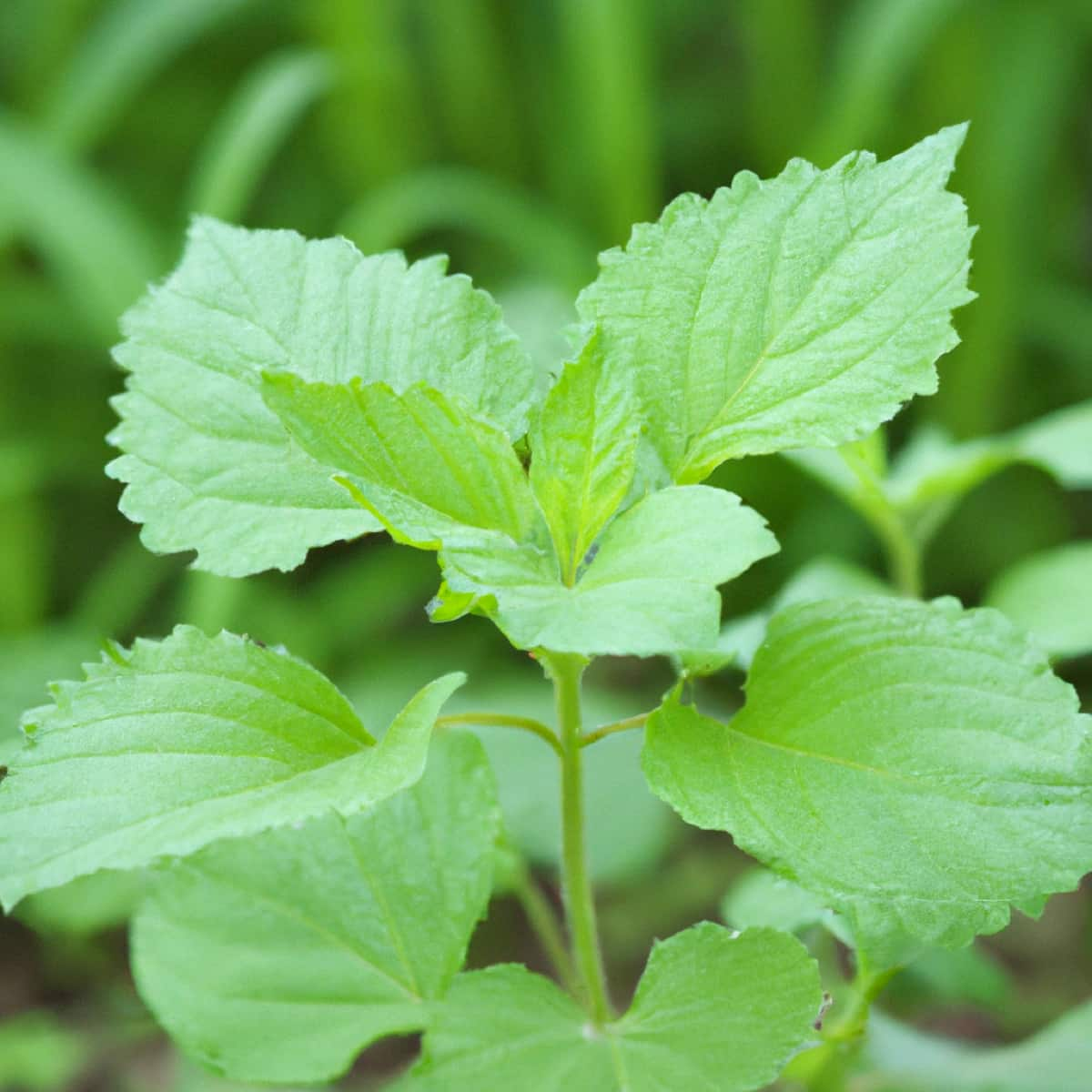
After flowering, the plants produce small green fruit that turns brown as it matures. Patchouli is one of the most unique and aromatic herbs in the garden. It’s an excellent choice for adding a note of fragrance to any garden, and it can be grown in either large or small containers.
Key rules to grow and care for Patchouli
Climate suitable for growing Patchouli in the garden
Patchouli prefers full sun but can tolerate partial shade. It grows best in fertile, well-drained soil, but it will also do well in sandy soil. When growing Patchouli, you need to remember a few things: ensure the soil doesn’t become too wet or too dry and provide plenty of nitrogen and phosphorus. To grow Patchouli successfully, you will need plenty of sunlight. However, if you live in an area with harsh weather, you may want to consider growing this herb inside.
In case you missed it: How to Grow and Care for Pansies in Containers: A Beginners Guide
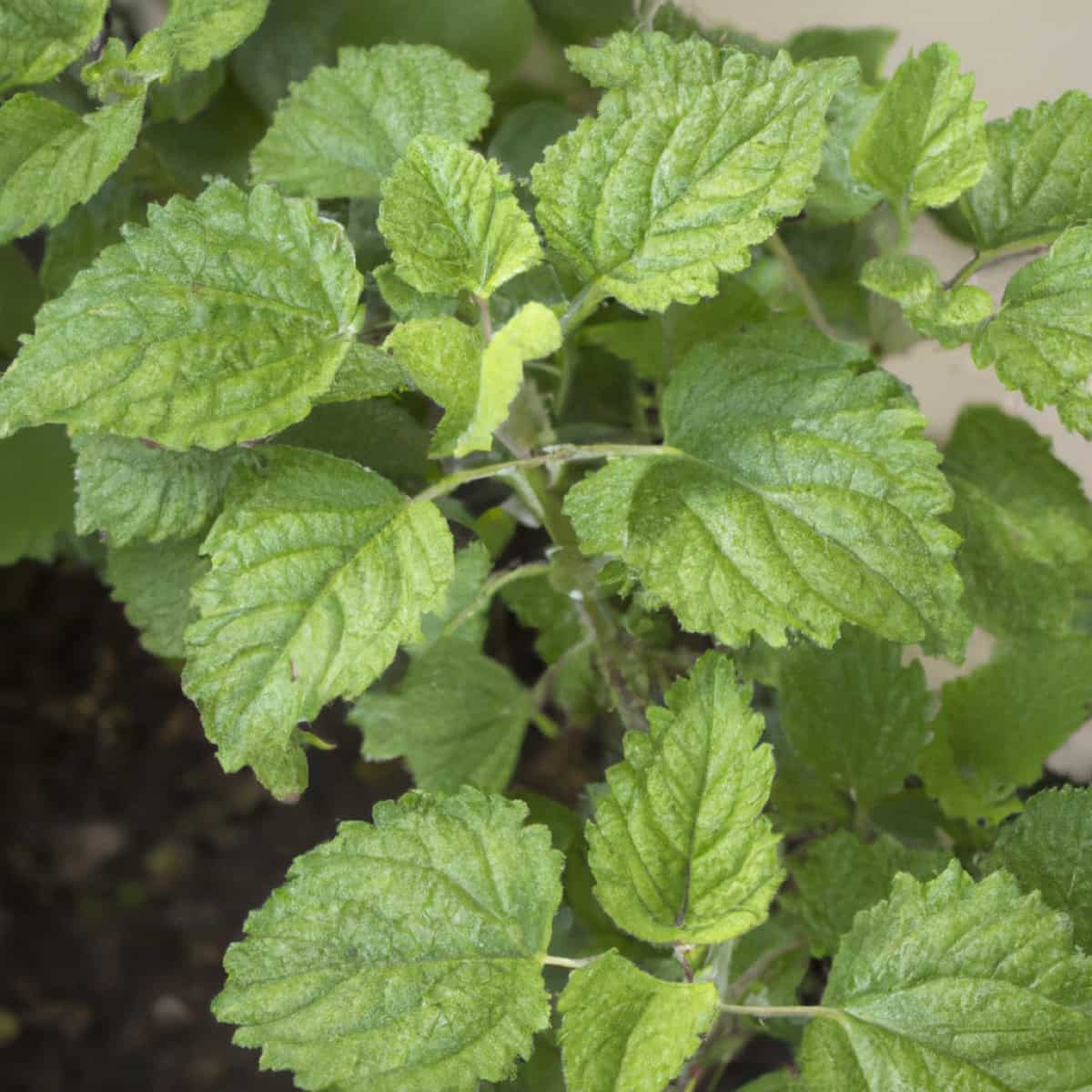
Patchouli loves moisture and should be kept well-watered throughout the growing season. To cultivate Patchouli in the garden, you must provide bright sunlight. This means planting your Patchouli garden in an area with 6 hours of direct sunlight daily. You can also grow Patchouli in a container or raised bed, but it will likely be smaller and may not produce as much fragrance.
Soil requirement for growing Patchouli in the garden
Patchouli prefers a slightly acidic, moist environment with good drainage. Well-drained soils are ideal, and adding plenty of organic matter (such as compost) can help make up for any deficiencies. Sunlight is necessary for growing Patchouli in the garden. The plant grows best in full sun but can tolerate some light droughts. A sunny location with good drainage is ideal, as is a slightly acidic soil with plenty of organic matter.
Because Patchouli oil is derived from the resin of the Patchouli plant, it needs well-drained soil to avoid waterlogging and root rot. You will want to plant your Patchouli plants in a well-protected location to avoid harsh weather conditions and pests. Finally, water your Patchouli plants regularly and fertilize them monthly with a high-quality organic fertilizer.
Water requirement for growing Patchouli in the garden
The plant needs plenty of water to grow and will need to be watered regularly during its first year in the garden. Once the plant has rooted, it is best to water it monthly. A general rule of thumb is to water your plants twice a week during the active growth stage and then once every other week or so during the dormant stage. You will also want to ensure that the soil remains moist but not soggy.
Water is essential for growing Patchouli in the garden, so be sure to water regularly and let the soil dry between watering sessions. Be aware that excess water can cause root rot or other problems, so adjust your watering schedule as needed. Additionally, ensure that the area where you are planting Patchouli receives full sunlight throughout the day; under-shaded plants will not produce as many oil seeds and will likely yield a poorer-quality crop.
In case you missed it: 9 Best Berries to Grow in Containers: Well Explained in Simple Steps
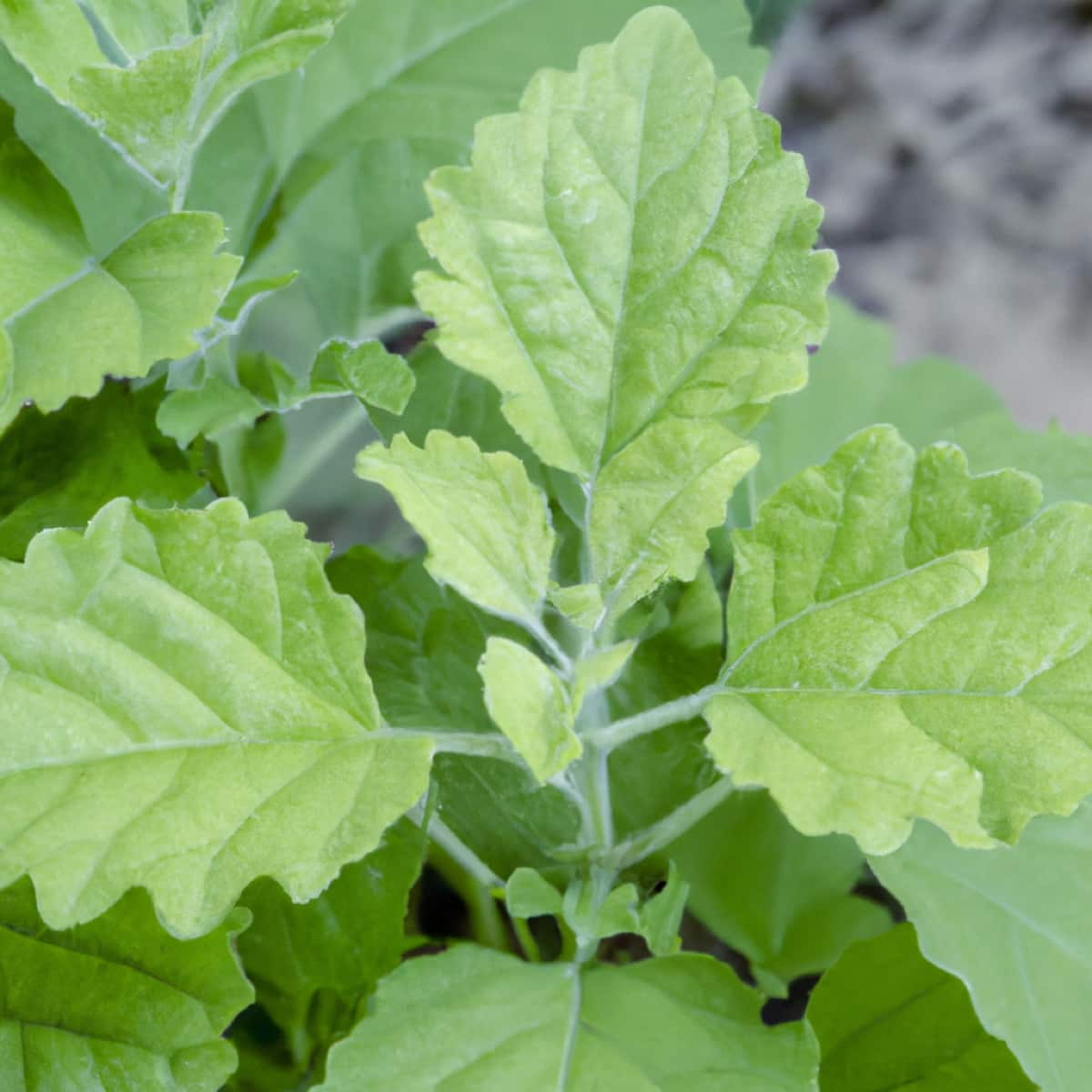
Propagating Patchouli
From cuttings
Patchouli is a hardy perennial that can be propagated from cuttings. Cuttings taken in the spring or early summer should root in about a month, and new plants will be planted in the fall. Select healthy, vigorous shoots with at least two nodes (the stems between the leaves and the stem itself). Make a 5-6-inch-long cutting from the node, then insert it into soil mixed with equal parts sand and compost. Water well and keep moist until rooted. Once rooted, fertilize regularly with a high-quality granular fertilizer diluted 20-50% with water.
From seeds
Patchouli is a popular scented herb that can be found in many homes. It is easy to grow and propagate, making it the best choice for gardeners who want to add a little fragrance to their space. Patchouli will bloom from late winter through early summer and produce up to 20 flowers per stem. When the flowers are pollinated, they will turn into pods which will then turn brown and break open to release the seeds.
Collect the seeds and store them in a cool place away from direct sunlight. To grow Patchouli, start by planting the seeds in early spring. Keep the plants well-watered and shaded throughout the summer. Plant your Patchouli seeds in well-drained soil. Patchouli loves fertile soil that is heavily amended with compost but doesn’t need added fertilizer.
Space your seedlings about 20 centimeters apart, and water them regularly; don’t allow the soil to become dry. Fertilize them every couple of weeks with compost or manure if desired. Protect your Patchoulis from frost by covering them with a sheet of plastic during winter. Also, dress them with organic mulch in the springtime to help keep their roots cool and moist.
Patchouli plant care
Fertilizer requirement for growing Patchouli in the garden
A moderate to heavy fertilizer requirement is necessary to grow Patchouli in the garden. A monthly application of a nitrogen-rich fertilizer at a rate of 1/2 to 1 cup per square foot is generally recommended. Other important nutrients for Patchouli growth include potassium and phosphorus. To grow and care for Patchouli in the garden, you must provide a regular fertilizer supply.
Apply nitrogen and phosphorus nutrients every two weeks during the growing season, starting early spring and continuing through mid-summer. When planting your Patchouli shrubs, use good quality potting soil that is well-drained. Water your plants regularly, but avoid over-watering, which can cause root rot. Fertilize your plants regularly throughout their growth cycle to ensure they produce desirable aromatic oils.
In case you missed it: How to Grow and Care for Gardenia in Pots: A Step-by-Step Guide for Beginners
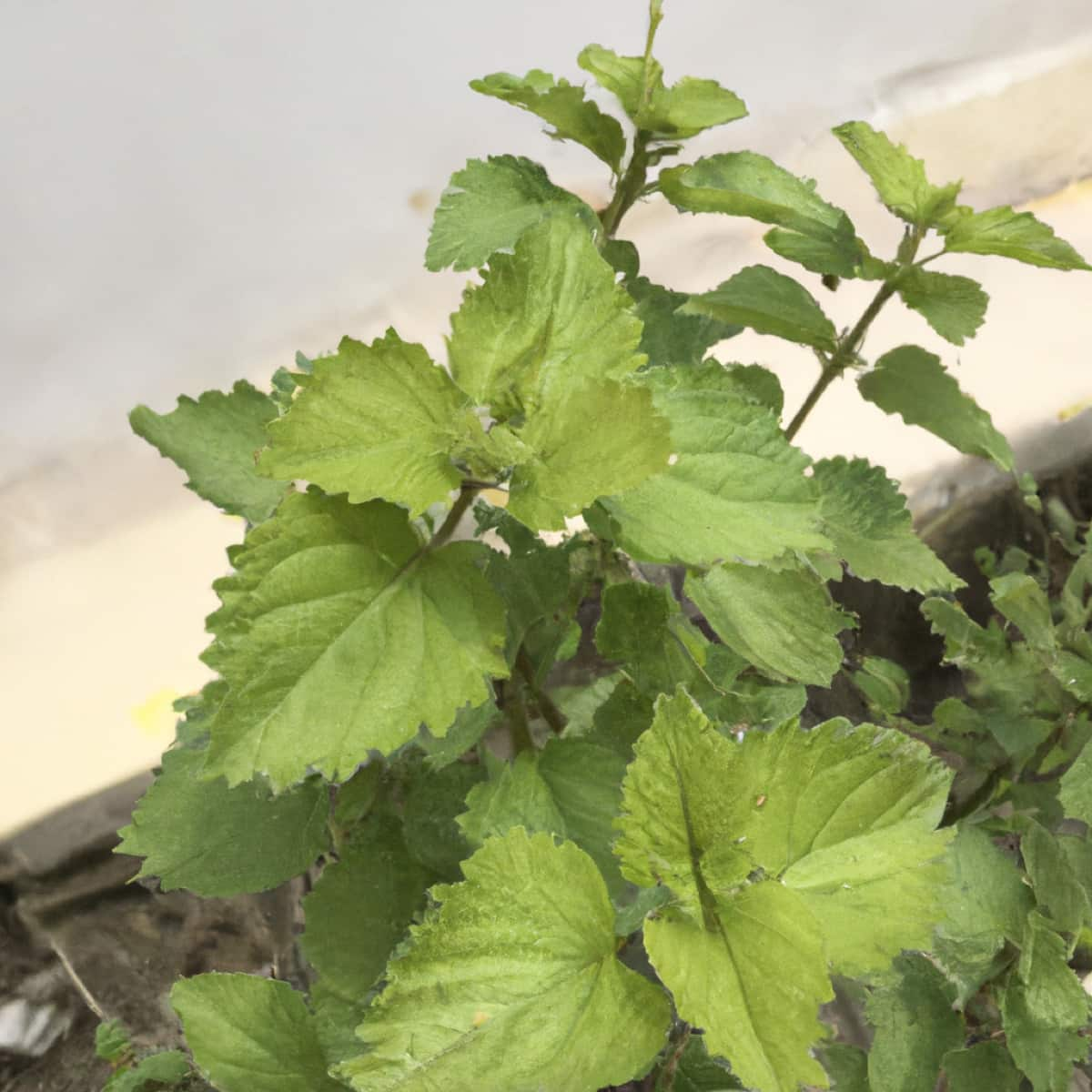
Pruning Patchouli plant
Patchouli is a hardy perennial that will grow slowly but steadily, reaching 1-2 feet tall with branches. To get the most from your Patchouli, deadhead it regularly to keep it compact and bushy. Prune off damaged branches and trim back the tip of the branch to promote new growth. Keep an eye on it in late summer and early fall when the leaves turn yellow and brown and drop off to prevent overgrowth. In the garden, Patchouli can be grown as an annual or a perennial.
Annuals should be planted in early spring and harvested in late fall, while perennials will keep flowering throughout the year. Pruning is necessary to maintain the correct shape and size for Patchouli plants. To prune Patchouli, first identify the structure you want to maintain. This can be the stem height, number of branches, or overall plant shape. Cut away any dead or damaged parts of the plant until you reach your desired result. Make sure to leave some healthy roots behind so the plant can regenerate itself to its original size.
Patchouli plant care in winter
Patchouli is a perennial plant that will grow in most climates but prefers moist, well-drained soil. It can be grown as an annual or biennial and will flower and produce seeds in either case. In the North, Patchouli plants should be planted early to mid-spring to establish before the onset of hot weather.
In warmer climates, Patchouli can be grown throughout the year. During winter, protect it from cold temperatures. Many people use tarps or plastic sheeting to cover their plants when cold outside. You can also stake your plant down if needed. Make sure to water your Patchouli regularly in winter and fertilize it every few months with a high-nitrogen fertilizer.
Pests and diseases of Patchouli and their control
Patchouli is a sturdy shrub that can grow tall and wide. There are a few pests that can affect Patchouli plants. The most common is the Silverleaf whitefly which sucks sap from the plant. Aphids and scale insects can also damage the foliage or cause foliar blight. The plant grows in tropical and subtropical regions. Patchouli oil has a distinctive, pungent odor used in perfumes, soaps, and cosmetics.
In case you missed it: Key Rules to Grow String of Pearls Succulent Indoors: Explained in Simple Steps

Several diseases can affect Patchouli plants. Powdery mildew is the most common disease. It is caused by a fungus or bacteria and causes patches on the leaves to turn brown and develop white powder on them. The disease can be controlled with fungicides or by removing infected plants.
Another disease that can affect Patchouli plants is rust. Rust causes lesions on the leaves that turn brown and eventually drop off. The disease can be controlled with fungicides or by removing infected plants. There is also an infestation of aphids that can cause stunted growth in Patchouli plants. Aphids are small creatures that feed on plant sap, so controlling aphids will help to promote healthy growth in Patchouli plants.
Patchouli leaves harvesting
Patchouli is a tough plant to grow in the home garden, but with some preparation and know-how, you can produce this aromatic herb in abundance. To harvest Patchouli, you must start by growing the plants in a sunny location. Once the plants have grown tall and green, they begin harvesting. When harvesting Patchouli, be sure to collect only the top growth of the plant. Harvesting during later stages of growth will result in a lower-quality oil.
Once your Patchouli has been harvested, it’s important to dry the plants completely before storage. To do so, strip away all the leaves and branches from the stem, then hang or lay the plants flat for several weeks in a warm, dry place. Check on them often and remove any dried leaves that may fall off. Once dry, store your Patchouli in an airtight container away from direct sunlight.
In case you missed it: How to Grow and Care for Rubber Plants Indoors: A Beginners Guide
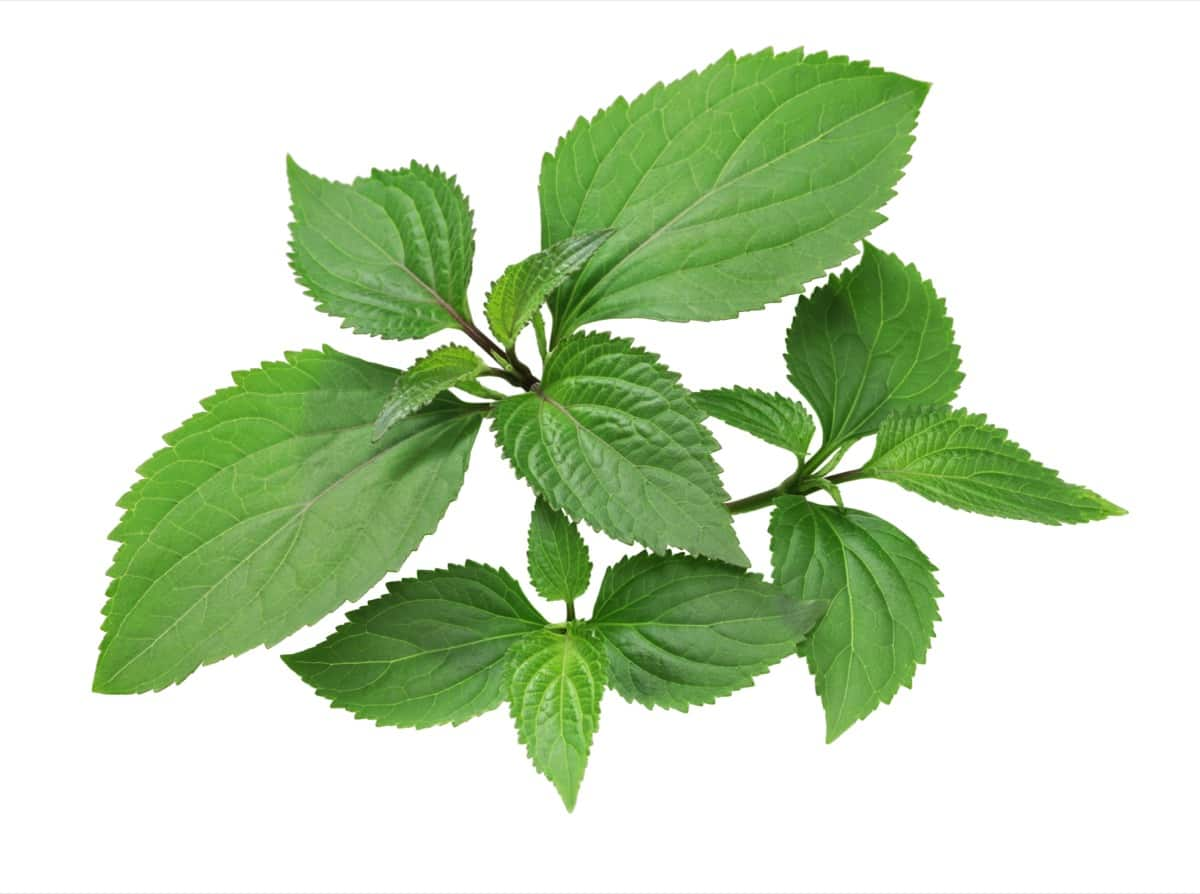
Conclusion
Patchouli is a fragrant, dark-green plant that can be grown as an herb or a shrub. The best time to grow Patchouli is from fall through early spring when the temperatures are cool and the sun does not shine too hard. Patchouli is a versatile plant that can be grown in various climates and conditions. This article provides tips on how to get the most out of this hardy, aromatic herb by growing it outdoors in a sunny location. Following these tips, you can enjoy Patchouli’s fragrance and therapeutic properties all year round.
- Flower Garden Designs and Layouts for Beginners
- Planting and Spacing Techniques in Papaya: A Beginner’s Guide
- Growing Gold: Essential Techniques for Planting Pineapples
- How to Make Kalanchoe Plant Bushy: Home Remedies and Solutions
- 11 Reasons Why Your Gardenia is Not Blooming: Home Remedies and Solutions
- Eco Elegance: The Guide to Designing a Drought-Tolerant Landscape
- Gardening on a Slope: Strategies for Hillside Landscaping
- Nourish and Flourish: Top Organic Mulches for Thriving House Plants
- Everything You Want to Know about Indian Mogra Flower: Discover Uses and Growing
- Green Thumb Success: Expert Tips for Cultivating Greenhouse Pumpkins All Year Round
- Maximize Growth & Flavor: The Ultimate Guide to Companion Planting in Herb Gardens
- How to Control Rhododendron Problems Naturally: Home Remedies and Organic Ways to Fix Them
- Natural Magic: The Remarkable Benefits of Cinnamon for Plants
- Best Steps to Revive Dying Tulip with Natural and Organic Treatment
- 10 Reasons Why Your Angel Trumpet is Not Blooming: Remedies and Treatment
- How to Fix Periwinkle Leaf and Flower-Related Problems: Natural Remedies and Solutions
- How to Fix Zinnias Leaf and Flower Problems: Discover Natural and Home Remedies
- Organic Steps to Induce Lemon Tree Flowers: A Comprehensive Guide
- Bloom Booster: Crafting the Perfect Homemade Bougainvillea Fertilizer
- Optimizing Growth: A Guide to Applying NPK Fertilizer for Potted Plants
- 10 Best Homemade Fertilizers for Rubber Plant: DIY Recipes and Application Method
- How to Boost Female Pumpkin Flowers: Effective Steps for More Flowers and High Yields
- Transform Your Indoor Garden: Top Benefits of Pink Salt for Houseplants
- 10 Best Homemade Fertilizers for Peacock Plants (Calathea): Easy DIY Guide
- Unlock Blooms: 9 Reasons Why Your Potted Chrysanthemum is Not Blooming
- 8 Reasons Why Your Potted Hibiscus is Not Blooming: Fix it with Simple Solutions
- Unlock Blooms: 9 Key Reasons Your Potted Frangipani Won’t Flower
- 10 Reasons Why Is My Ice Plant Not Blooming: Remedies and Treatment
- 10 Reasons Why My Potted Hydrangea Not Blooming: Treatment and Remedies
- 10 Reasons Why is My Wisteria Not Blooming: Remedies and Treatment
- 10 Reasons Why is My Goldfish Plant Not Blooming: Remedies and Treatment
- Maximize Your Space: Ultimate Guide to Balcony Gardening with Grow Bags
- 10 Reasons Why Your Iris is Not Blooming: Remedies and Treatment
- 10 Reasons Why Your Anthurium Plant is Not Blooming: Treatment and Remedies
- 10 Reasons Why Your Aquaponic Plants Are Not Flowering: Remedies and Treatment
- 10 Reasons Why Your Agapanthus is Not Flowering: Remedies and Treatment